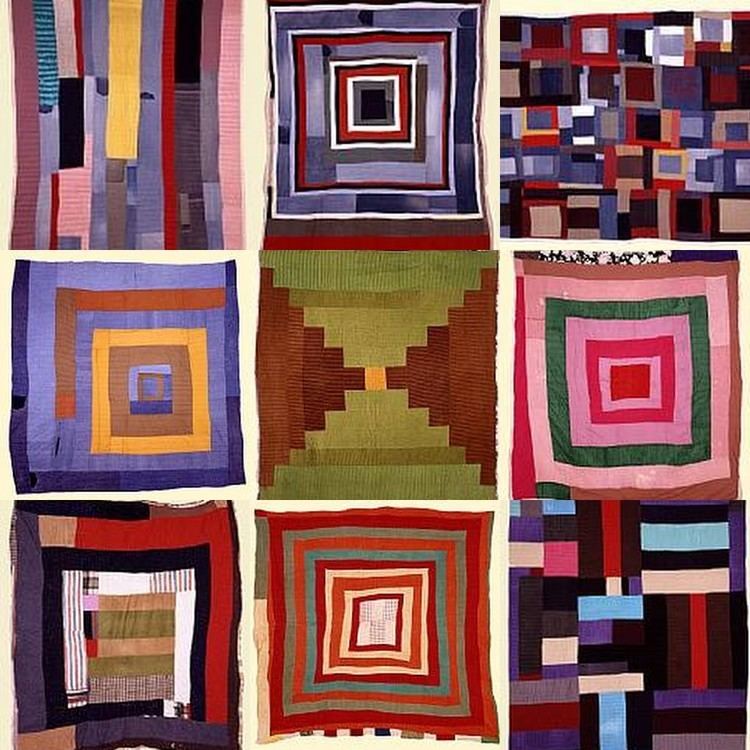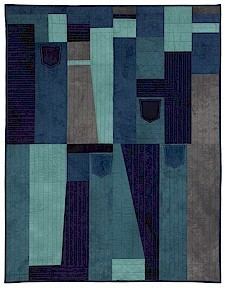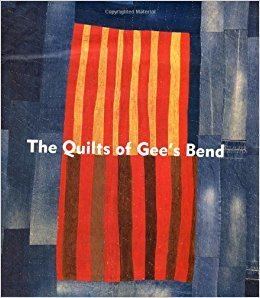 | ||
The quilts of gee s bend savannah
The Quilts of Gee's Bend are quilts created by a group of women and their ancestors who live or have lived in the isolated African-American hamlet of Gee's Bend, Alabama along the Alabama River. The Quilts of Gee's Bend are considered to be unique, and one of the most important African-American visual and cultural contributions to the history of art within the United States.
Contents

History

Just southeast of Selma, in the Black Belt of Alabama, Gee's Bend (officially called Boykin) is an isolated, rural community of about seven hundred inhabitants. The area is named after Joseph Gee, a landowner who came from North Carolina and established a cotton plantation in 1816 with his seventeen slaves. In 1845 the plantation was sold to Mark H. Pettway, this name still remains predominant in the county as many members of the community still carry the name. After emancipation many freed slaves stayed on the plantation as sharecroppers. In the 1930s, Gee's Bend saw a significant shift in their community, as a merchant who had given credit to the families of the Bend died, and the family of this merchant collected on debts owed to him in a brutal way. These indebted families watched as all their food, animals, tools and seed were taken away, and the community was saved by the distribution of Red Cross rations distributed. Much of the land of this area was sold to the Federal Government and the Farm Security Administration, and those organizations set up Gee's Bend Farms, Inc.-a pilot project that was a cooperative based program intended to help sustain the inhabitants of the area. The government sold tracts of land to the families of the bend, thus giving the African American population control over the land, which at the time was still rare. The community of Gee's Bend was also the subject of several Farm Security Administration photographers, like Dorothea Lange. During the latter half of The Great Depression the inhabitants of the area faced challenges as farming practices became increasingly mechanized, and consequently, a large portion of the community left.

However, many inhabitants of the community stayed. In 1949, a U.S Post Office was established, and in 1965 Martin Luther King Jr. visited the area. From the 1960s onward, the community of Gee's Bend, as well as the Freedom Quilting Bee in nearby Alberta, gained attention for the production of their quilts. Folk art collector, historian, curator William Arnett brought further attention to this artistic production with his Souls Grown Deep Foundation in Atlanta, Georgia, as he helped organize many exhibitions which featured their work.
The quilts

The quilting tradition in Gee's Bend goes back to the 19th century perhaps influenced in part by patterned African textiles, enslaved women pieced together strips of cloth to make bedcovers. Throughout the post-bellum years and into the 20th century, Gee's Bend women made quilts to keep themselves and their children warm in unheated shacks that lacked running water, telephones and electricity. Along the way they developed a distinctive style, noted for its lively improvisations and geometric simplicity.

The quilts have been exhibited at the Museum of Fine Arts Houston, the Indianapolis Museum of Art, the Philadelphia Museum of Art, and the Whitney Museum of American Art, among others. The reception of the work has been mostly positive, as Alvia Wardlaw, curator of Modern and Contemporary Art at the Museum of Fine Arts, Houston wrote, "The compositions of these quilts contrast dramatically with the ordered regularity associated with many styles of Euro-American quiltmaking. There's a brilliant, improvisational range of approaches to composition that is more often associated with the inventiveness and power of the leading 20th-century abstract painters than it is with textile-making,". The Whitney venue, in particular, brought a great deal of art-world attention to the work, starting with Michael Kimmelman's review in The New York Times which called the quilts 'some of the most miraculous works of modern art American has produced' and went on to describe them as a version of Matisse and Klee arising in the rural South. Comparable effect can be seen in the quilts of isolated individuals such as Rosie Lee Tompkins, but the Gee's Bend quilters had the advantage of numbers and backstory.
More than 50 quiltmakers currently make up the Gee's Bend Collective, which is owned and operated by the women of Gee’s Bend. Every quilt sold by the Gee’s Bend Quilt Collective is unique and individually produced.
